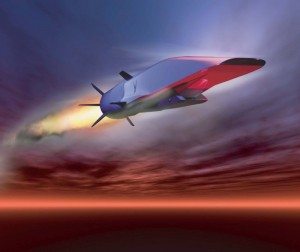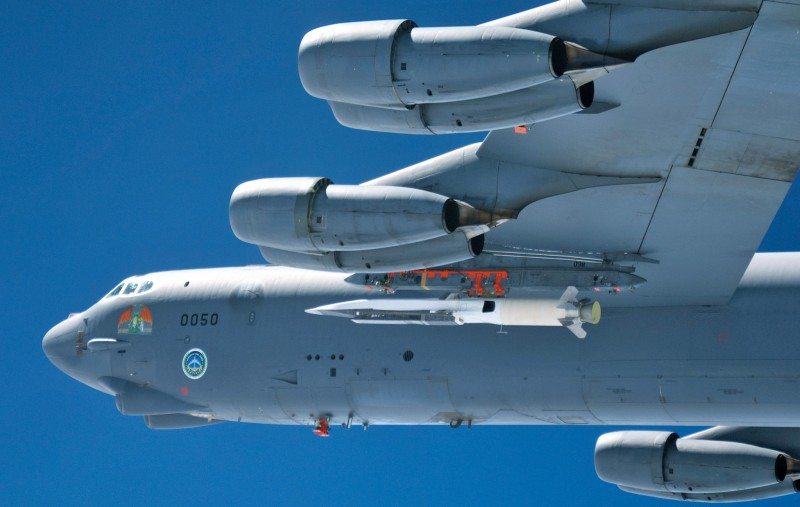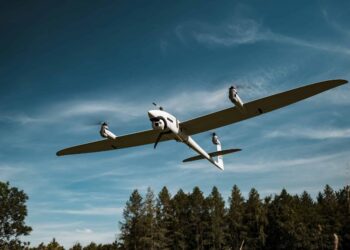Air Force engineers currently plan to fly the second X-51A Waverider hypersonic flight test demonstrator as early as March 22, program officials said March 15.
“We are proud of the first flight results, and at the same time we understand the inherent risk in a high-technology demonstrator like the X-51A,” said Curtis Berger, the director of the hypersonics programs at Pratt & Whitney Rocketdyne, the company that built the X-51A’s fuel-cooled supersonic combustion ramjet, or scramjet engine. “We can’t wait to get this second vehicle in the air and show what we can do.”
Four X-51As were built for the Air Force by teams at Boeing and Pratt & Whitney Rocketdyne. The X-51A made history on its inaugural hypersonic flight test on May 26, 2010, when it was launched from Edwards Air Force Base, Calif., tucked under the wing of a B-52 Stratofortress. After release, it ultimately accelerated to Mach 5 under scramjet power. The flight was about 10 times longer than any previous hypersonic scramjet flight and “80 to 90 percent” of flight test objectives were achieved, program officials said.
Underscoring the complexity and uncertainty of hypersonic flight testing, Charlie Brink, the Air Force Research Laboratory X-51A program manager, noted that not everything went perfectly on the first flight test. The vehicle failed to accelerate as quickly as anticipated and the flight test had to be terminated after 143 seconds under scramjet power. A perfect flight would have lasted another 100 seconds and accelerated the X-51A cruiser to Mach 6.

According to Mr. Brink, two separate fault trees were identified: The vehicle failed to accelerate as rapidly as expected and unexpected temperatures and pressures were observed in internal sections of the cruiser. Engineers examined and walked through 156 different nodes in excruciating detail in search of a cause.
“In a demonstrator you learn things,” Mr. Brink said.
Program officials already knew from wind tunnel engine tests about the intense heat the scramjet engine and hypersonic flight creates. During flight, the scramjet engine actually grows about three-fourths of an inch. The effect complicates design for such things as interface seals.
The Boeing “Phantom Works” and Pratt & Whitney Rocketdyne teams pulled the engines from the three remaining flight test vehicles and focused on the interface between the rear of the fuel-cooled engine and its vehicle mounted nozzle. Mr. Brink said the effort identified an “apparent thermal seal breach” at the interface which was not as tight as it needed to be. This caused some of the hot gases that should have provided thrust to leak into the rear of the cruiser.
“We went through a complete critical design review of the interface,” Mr. Brink said.
In the end, the team made design changes to make it a “much more robust” interface. All of the remaining X-51As have been modified with the new beefed up design.
Mission and weather permitting, a B-52 test crew will take off March 16 from the Air Force Flight Test Center at Edwards AFB and the flight test team will run through a dress rehearsal for the entire flight profile for the next hypersonic mission, albeit without the X-51A attached.
The second X-51 is waiting in a hangar at Edwards AFB and is ready to fly, Mr. Brink said. He added the next flight is scheduled for March 22 over the Navy’s Point Mugu Sea Range but a number of factors with the flight-test vehicle, weather, range availability, and supporting test assets could slip the flight date to the right.
Mr. Brink said officials at the Defense Advanced Projects Research Agency and at NASA have been critical to the X-51A’s development. Those at DARPA provided substantial funding and NASA officials provided strong support via access to their wind tunnels at Langley Research Center and to the supercomputer at NASA Ames Research Center where computational fluid dynamics calculations of drag and other aerodynamic forces were performed.
Mr. Brink said the computations were validated during the first hypersonic test, coming in within 2 percent of actual data observed during the first flight. NASA Dryden aircrews also provide photo and safety chase during the flight tests.
He noted the X-51A was not designed to be a weapon, but its success as a technology demonstrator soon may enable the transition of technologies to a new class of hypersonic weapon systems. He added that there are a number of initiatives in the works, but none had been decided upon and there currently is no program of record for a hypersonic strike or ISR aircraft based upon the Waverider.
“Right now we are just focused on the X-51’s next flight,” Mr. Brink said. “We definitely hope it will go longer…and faster than the first.”










